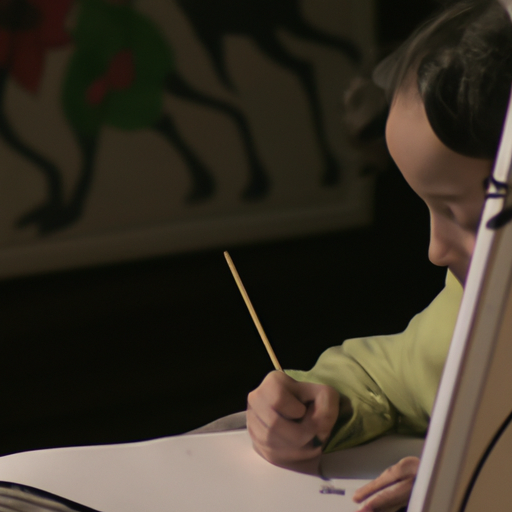From 2024, MOE removes NT, NA, and Express Streaming in Secondary Schools
The Future of Secondary School Streaming in Singapore: Part 1 – Background of Streaming
In the ever-evolving landscape of education, Singapore has made a significant announcement that is set to reshape the way students are educated. The Ministry of Education (MOE) has unveiled its plan to eliminate streaming in secondary schools, starting from the year 2024.
This monumental decision by MOE has captured the attention of educators, parents, and students alike, as it marks a departure from a long-standing educational tradition in the country. In this comprehensive exploration, we delve into the background of streaming in Singapore’s secondary schools, shedding light on the system’s history, its streams, and the pros and cons associated with it.
Understanding the Traditional Streaming System
A Historical Perspective
The streaming system in Singapore’s secondary schools has been a cornerstone of the nation’s education framework for decades. It is essential to comprehend its historical roots to appreciate the significance of the recent MOE announcement. Traditionally, students were categorized into three primary streams based on their perceived academic abilities:
- Express: The Express stream, often regarded as the most academically challenging, catered to students deemed to excel in their studies.
- Normal (Academic) (NA): The Normal (Academic) stream was designed for students who demonstrated a moderate level of academic proficiency.
- Normal (Technical) (NT): The Normal (Technical) stream was tailored to students with a focus on technical and vocational education.
Advantages and Disadvantages of the Traditional System
While the streaming system had its merits, such as providing tailored education, it also faced criticism on various fronts:
Advantages of Traditional Streaming:
- Customized Learning: Streaming allowed educators to tailor their teaching methods to the specific needs and abilities of students in each stream.
- Examination Preparation: It facilitated focused preparation for national examinations like the ‘O’ levels, ensuring that students were adequately prepared for their respective levels of difficulty.
Disadvantages of Traditional Streaming:
- Labeling Stigma: Students in lower streams often faced the stigma of being labeled as less academically inclined, potentially affecting their self-esteem and motivation.
- Limited Flexibility: The system offered limited room for students to explore and pursue subjects outside their designated stream, hindering their holistic development.
In the face of these advantages and disadvantages, Singapore’s education authorities decided to take a bold step forward, aiming to revamp the traditional streaming system and introduce a more flexible and inclusive approach.
The Paradigm Shift Ahead
As we move forward, the next section will delve into MOE’s official announcement made by Education Minister Chan Chun Sing on March 7, 2022. We will explore the key points of this announcement, including the introduction of G1, G2, and G3 levels, and highlight the shift towards mixed-form classes and individualized learning.
The future of secondary school education in Singapore is indeed taking a new direction, and it’s essential to grasp the details of this transformation.
Stay with us as we navigate through the intricacies of MOE’s groundbreaking decision in the upcoming section.
Click Here To Request a Secondary School Home Tutor
The Future of Secondary School Streaming in Singapore: Part 2 – MOE’s Announcement
As the education landscape in Singapore undergoes a transformative shift, it becomes imperative to delve into the core of this change. The Ministry of Education (MOE) has set the stage for a new era in secondary school education, and the spotlight is firmly on the groundbreaking announcement made by Education Minister Chan Chun Sing on March 7, 2022. In this section, we will dissect MOE’s official announcement, unraveling its key components and the profound implications it holds for the future of education in Singapore.
The Announcement That Reshaped Education
A Momentous Declaration
Education Minister Chan Chun Sing’s announcement sent ripples of anticipation and curiosity through the education sector and the broader community. Here are the key points that were unveiled:
- G1, G2, and G3 Levels: Under the new framework, students will be grouped into G1, G2, and G3 levels, representing a significant departure from the traditional Express, Normal (Academic) (NA), and Normal (Technical) (NT) streams. The ‘G’ stands for “general,” signifying a more inclusive approach to education.
- Mixed-Form Classes: Instead of rigidly defined streams, students will find themselves in mixed-form classes. These classes offer the flexibility for students to select subjects at different levels based on their individual strengths and interests.
- Individualized Learning: The heart of this transformation lies in the concept of individualized learning. Students will have the autonomy to choose subjects at a level that aligns with their abilities, allowing for a more tailored and personalized educational experience.
A Shift Towards Inclusivity and Flexibility
The introduction of G1, G2, and G3 levels marks a significant paradigm shift. It reflects the MOE’s commitment to creating an educational environment that is more inclusive and adaptable to the diverse needs of students. This shift signifies that no student will be confined to a specific stream based on initial assessments, opening up opportunities for growth and exploration.
Mixed-Form Classes: Fostering Collaboration and Diversity
The move towards mixed-form classes represents a fundamental change in the way students interact with their peers. In these classes, students from different levels will collaborate, fostering a dynamic learning environment where ideas can flow freely. This not only encourages teamwork but also allows students to gain exposure to a broader range of perspectives.
Empowering Students with Choices
Perhaps the most empowering aspect of MOE’s announcement is the emphasis on individualized learning. By giving students the autonomy to choose subjects at different levels, they can explore their interests more freely and build a curriculum that suits their unique strengths and aspirations. This flexibility is expected to boost students’ overall engagement and motivation in their studies.
What Lies Ahead
As we delve deeper into this educational transformation, the next section will explore the specifics of G1, G2, and G3 levels. We will unravel how students can navigate this new system and the advantages it offers for their academic development. The future of secondary school education in Singapore is evolving, and it’s crucial to understand the nuts and bolts of this progressive approach.
Join us in the next section as we uncover the details of this exciting educational landscape.
Click Here To Request a Secondary School Home Tutor
The Future of Secondary School Streaming in Singapore: Part 3 – G1, G2, and G3 Levels
As Singapore’s education system embarks on a transformative journey, it’s crucial to explore the heart of this evolution: the introduction of G1, G2, and G3 levels. This section dives into the intricacies of these new subject levels, explaining how they empower students to tailor their education based on their abilities and interests. Join us as we unravel the advantages of this flexible approach for students’ academic development.
Understanding G1, G2, and G3 Levels
A Shift from Traditional Streams
G1, G2, and G3 levels signify a departure from the conventional Express, Normal (Academic) (NA), and Normal (Technical) (NT) streams. This shift is designed to create a more inclusive and flexible learning environment for students.
Empowering Students with Choices
Under this new system, students have the autonomy to choose subjects at different levels, enabling them to customize their educational journey according to their strengths and interests. This approach fosters a sense of ownership in their learning process.
Flexibility and Autonomy for Students
Choosing the Right Level
Students can now select subjects at G1, G2, or G3 levels based on their individual aptitude and aspirations. This flexibility ensures that they are not bound by predetermined categories but rather empowered to make informed choices.
Balancing Challenges and Comfort
For students who excel in a particular subject, taking it at a more demanding level is an option. Conversely, students who may find certain subjects challenging can choose a less demanding level. This balance allows students to challenge themselves while also ensuring they are comfortable with the coursework.
Advantages of Individualized Learning
Tailored Learning Experience
One of the primary advantages of G1, G2, and G3 levels is the tailored learning experience it offers. Students receive instruction that aligns more closely with their abilities, leading to better comprehension and engagement.
Motivation and Confidence Boost
This system has the potential to boost students’ motivation and confidence. When students see themselves succeeding in subjects they are passionate about, it can have a positive impact on their overall academic journey.
Preparation for a Dynamic Future
In a rapidly evolving world, adaptability and versatility are key skills. The G1, G2, and G3 levels prepare students for a future where they may need to pivot and acquire new skills as they navigate a changing job market.
What Lies Ahead
The introduction of G1, G2, and G3 levels marks a significant stride toward a more inclusive and student-centric education system in Singapore. In the next section, we will explore the transition from course-based subject offerings to Full Subject-Based Banding (SBB). This shift is integral to realizing a more dynamic and customized learning experience. Join us as we unravel the benefits of Full SBB and its implications for students.
Stay with us on this educational journey as we continue to explore the exciting changes in Singapore’s secondary school education system.
Click Here To Request a Secondary School Home Tutor
The Future of Secondary School Streaming in Singapore: Part 4 – Full Subject-Based Banding (SBB)
As Singapore continues its journey to revolutionize secondary school education, we turn our attention to an integral aspect of this transformation: Full Subject-Based Banding (SBB). In this section, we will explore the transition from the traditional course-based subject offerings to SBB. We will uncover the benefits of this approach in catering to diverse learning profiles and highlight schools that have embraced Full SBB, including Crescent Girls’ School, Tanjong Katong Girls’ School, and Tanjong Katong Secondary School.
The Evolution of Subject-Based Banding
From Course-Based to Subject-Based
Full Subject-Based Banding represents a significant shift in how subjects are offered in secondary schools. Unlike the traditional course-based approach, where students were confined to the subjects aligned with their streams, SBB offers a more flexible and inclusive curriculum.
Catering to Diverse Learning Profiles
One of the key advantages of Full SBB is its ability to cater to the diverse learning profiles of students. It recognizes that students have unique strengths and interests, and it allows them to explore subjects that align with their aptitudes.
Benefits of Full Subject-Based Banding
Customized Learning Paths
With Full SBB, students can tailor their learning paths more precisely. This customization ensures that they engage with subjects that genuinely interest them and align with their career aspirations.
Reducing Stigma and Labeling
SBB helps mitigate the stigma and labeling often associated with traditional streaming. Students are no longer confined to predefined streams and are free to choose subjects that reflect their abilities and passions.
Enhanced Holistic Development
By offering a broader range of subjects, Full SBB supports students’ holistic development. It encourages them to explore various fields of knowledge, fostering a more well-rounded education.
Schools Embracing Full SBB
Crescent Girls’ School
Crescent Girls’ School, a well-established institution, has embraced Full SBB. This move demonstrates the commitment to providing a dynamic and inclusive learning environment for its students.
Tanjong Katong Girls’ School
Tanjong Katong Girls’ School, known for its academic excellence, has also adopted Full SBB. This decision reflects the school’s dedication to empowering its students with choices and opportunities.
Tanjong Katong Secondary School
Tanjong Katong Secondary School, previously admitting students mainly from the Express course, is now onboard with Full SBB. This shift ensures a more diverse student body and a richer educational experience for all.
A New Horizon in Education
Full Subject-Based Banding is a pivotal step in reshaping Singapore’s secondary school education. It offers students the freedom to explore their interests, reduces labeling, and promotes holistic development.
As we move forward, the next section will analyze the potential impact of MOE’s decision to remove streaming on students’ overall educational experience. We will also delve into the challenges that MOE may face in implementing this new system, such as resource allocation and teacher adaptation. Join us as we navigate through the evolving landscape of education in Singapore.
Stay with us as we continue to unravel the intricate details of this transformative journey.
Click Here To Request a Secondary School Home Tutor
The Future of Secondary School Streaming in Singapore: Part 5 – Impact and Challenges
As we embark on the final leg of our exploration into the future of secondary school streaming in Singapore, we delve into perhaps the most critical aspect: the impact and challenges associated with the Ministry of Education’s (MOE) decision to remove streaming from secondary schools starting in 2024.
In this section, we will analyze how this decision may affect students’ overall educational experiences, discuss the potential hurdles MOE may encounter during implementation, and reflect on the broader implications for Singapore’s education landscape.
Analyzing the Impact
A Holistic Educational Experience
One of the key anticipated impacts of removing streaming is the creation of a more holistic educational experience. Students will no longer be pigeonholed into rigid streams but will have the flexibility to explore a broader range of subjects.
Reducing Academic Pressure
By allowing students to choose subjects at different levels based on their abilities and interests, the new system may help reduce academic pressure. Students can find a balance between challenging coursework and subjects they excel in.
Promoting Inclusivity
The removal of streaming aims to promote inclusivity by ensuring that every student has the opportunity to excel in their areas of interest, regardless of their initial academic stream.
Challenges on the Horizon
Resource Allocation
Implementing this new system may pose resource allocation challenges for MOE. It requires careful planning to ensure that schools have the necessary resources, such as teachers and materials, to support diverse subject offerings.
Teacher Adaptation
Teachers will play a pivotal role in this transition, as they will need to adapt their teaching methods to cater to a wider range of students with varying abilities. Professional development and support will be crucial in this regard.
Coordination and Timetables
With students choosing subjects at different levels, coordinating timetables and ensuring a smooth logistical process may prove to be a complex endeavor. Schools will need to be well-prepared for this shift.
Broader Implications for Singapore’s Education Landscape
The decision to remove streaming in secondary schools is not merely a policy change; it signifies a significant shift in the philosophy of education in Singapore. It reflects a commitment to adaptability, inclusivity, and recognizing the diverse talents and interests of students.
This transformation has the potential to reshape the education landscape in Singapore, making it more responsive to the needs of the 21st century. It aligns with global trends in education that emphasize individualized learning and skills development.
In conclusion, the decision to remove streaming from secondary schools in Singapore is a bold step towards a more inclusive and student-centric education system. It holds the promise of providing students with a more holistic and personalized learning experience. However, challenges lie ahead, particularly in terms of resource allocation and teacher adaptation.
As we wrap up our journey through the future of secondary school streaming, let’s recap the key takeaways from each section:
- In Section 1, we explored the background of streaming in Singapore and its advantages and disadvantages.
- Section 2 delved into MOE’s announcement, highlighting the introduction of G1, G2, and G3 levels.
- Section 3 focused on the flexibility and autonomy that G1, G2, and G3 levels offer to students.
- Section 4 discussed the benefits of Full Subject-Based Banding and showcased schools embracing this approach.
- Finally, Section 5 analyzed the potential impact and challenges of removing streaming and its broader implications for Singapore’s education landscape.
We encourage you to stay informed about further developments in Singapore’s education system as it continues to evolve to meet the ever-changing needs of students in the 21st century.
Thank you for joining us on this educational journey.
Click Here To Request a Secondary School Home Tutor
From 2024, MOE removes NT, NA, and Express Streaming in Secondary Schools by Tuition Domain





